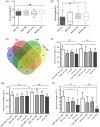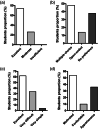Active learning tools improve the learning outcomes, scientific attitude, and critical thinking in higher education: Experiences in an online course during the COVID-19 pandemic
- PMID: 34652877
- PMCID: PMC8653153
- DOI: 10.1002/bmb.21574
Active learning tools improve the learning outcomes, scientific attitude, and critical thinking in higher education: Experiences in an online course during the COVID-19 pandemic
Abstract
Active teaching methodologies have been placed as a hope for changing education at different levels, transiting from passive lecture-centered to student-centered learning. With the health measures of social distance, the COVID-19 pandemic forced a strong shift to remote education. With the challenge of delivering quality education through a computer screen, we validated and applied an online course model using active teaching tools for higher education. We incorporated published active-learning strategies into an online construct, with problem-based inquiry and design of inquiry research projects to serve as our core active learning tool. The gains related to students' science learning experiences and their attitudes toward science were assessed by applying questionnaires before, during, and after the course. The course counted on the participation of 83 students, most of them (60.8%) from postgraduate students. Our results show that engagement provided by active learning methods can improve performance both in hard and soft skills. Students' participation seems to be more relevant when activities require the interaction of information, prediction, and reasoning, such as open-ended questions and design of research projects. Therefore, our data show that, in pandemic, active learning tools benefit students and improve their critical thinking and their motivation and positive positioning in science.
Keywords: COVID-19 pandemic; active learning; biology course; critical thinking; e-learning; higher education.
© 2021 International Union of Biochemistry and Molecular Biology.
Conflict of interest statement
No competing interest has been declared. All authors have seen and approved the manuscript. The manuscript has not been accepted or published elsewhere.
Figures







Similar articles
-
Perceptions of medical students towards online teaching during the COVID-19 pandemic: a national cross-sectional survey of 2721 UK medical students.BMJ Open. 2020 Nov 5;10(11):e042378. doi: 10.1136/bmjopen-2020-042378. BMJ Open. 2020. PMID: 33154063 Free PMC article.
-
Experiences and Attitudes of Elementary School Students and Their Parents Toward Online Learning in China During the COVID-19 Pandemic: Questionnaire Study.J Med Internet Res. 2021 May 19;23(5):e24496. doi: 10.2196/24496. J Med Internet Res. 2021. PMID: 33878022 Free PMC article.
-
Modification of teaching during the COVID-19 pandemic at the Department of Medical Education of Jagiellonian University Medical College.Folia Med Cracov. 2020;60(4):113-121. Folia Med Cracov. 2020. PMID: 33821856
-
Medical Education Challenges in the Era of Internationalization and Digitization.J Korean Med Sci. 2024 Oct 14;39(39):e299. doi: 10.3346/jkms.2024.39.e299. J Korean Med Sci. 2024. PMID: 39403752 Free PMC article. Review.
-
Online medical education in Egypt during the COVID-19 pandemic: a nationwide assessment of medical students' usage and perceptions.BMC Med Educ. 2022 Mar 30;22(1):218. doi: 10.1186/s12909-022-03249-2. BMC Med Educ. 2022. PMID: 35354406 Free PMC article. Review.
Cited by
-
Mental Health and Contraceptive Knowledge in High Schoolers: Comparing Remote and In-Person Learning during COVID-19.Medicina (Kaunas). 2023 Oct 22;59(10):1876. doi: 10.3390/medicina59101876. Medicina (Kaunas). 2023. PMID: 37893594 Free PMC article.
-
Experiences of soft skills development and assessment by health sciences students and teachers: a qualitative study.BMC Med Educ. 2025 May 19;25(1):724. doi: 10.1186/s12909-025-07289-2. BMC Med Educ. 2025. PMID: 40389931 Free PMC article.
-
Determining the challenges and opportunities of virtual teaching during the COVID-19 pandemic: a mixed method study in the north of Iran.BMC Res Notes. 2024 May 27;17(1):148. doi: 10.1186/s13104-024-06806-8. BMC Res Notes. 2024. PMID: 38802960 Free PMC article.
-
Editorial: Education and Training in Biomedical Science.Br J Biomed Sci. 2024 Sep 2;81:13598. doi: 10.3389/bjbs.2024.13598. eCollection 2024. Br J Biomed Sci. 2024. PMID: 39285897 Free PMC article. No abstract available.
-
Jigsaw as a Revision Module for Enhancing Learning in Biochemistry Among First-Year Medical Students.Cureus. 2024 Nov 29;16(11):e74720. doi: 10.7759/cureus.74720. eCollection 2024 Nov. Cureus. 2024. PMID: 39734984 Free PMC article.
References
-
- Aldenmyr SI, Wigg UJ, Olson M. Worries and possibilities in active citizenship: three Swedish educational contexts. Educ Citizsh Soc Justice. 2012;7:255–70. 10.1177/1746197912456341 - DOI
-
- Biesta G. What kind of citizenship for european higher education? Beyond the competent active citizen. Eur Educ Res J. 2009;8:146–58. 10.2304/eerj.2009.8.2.146 - DOI
-
- Janmaat JG, Piattoeva N. Citizenship education in Ukraine and Russia: reconciling nation‐building and active citizenship. Comp Educ. 2007;43:527–52. 10.1080/03050060701611920 - DOI
-
- Veugelers W. Creating critical‐democratic citizenship education: empowering humanity and democracy in Dutch education. Compare. 2007;37:105–19. 10.1080/03057920601061893 - DOI
-
- Nussbaum MC. Education and democratic citizenship: capabilities and quality education. J Hum Dev. 2006;7:385–95. 10.1080/14649880600815974 - DOI
Publication types
MeSH terms
LinkOut - more resources
Full Text Sources
Medical

